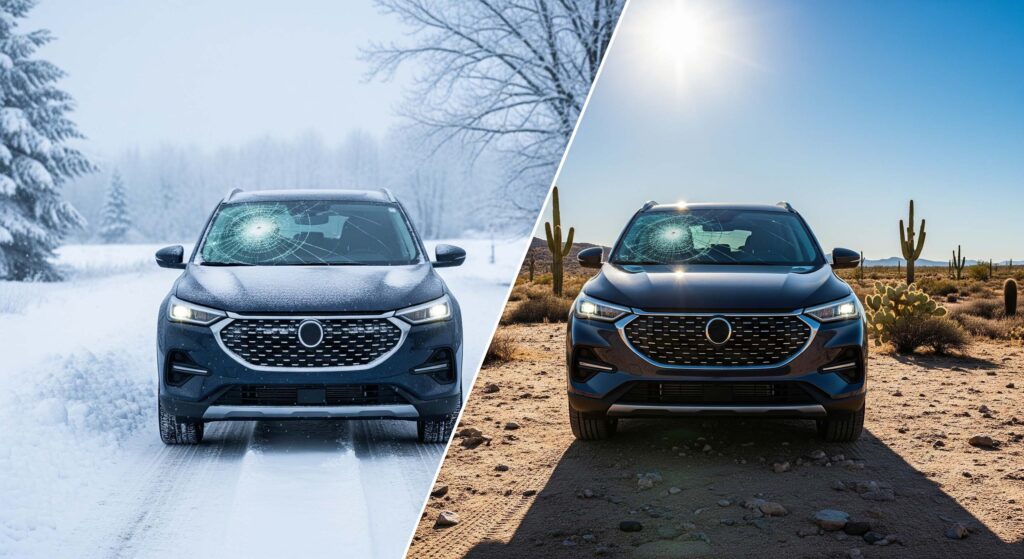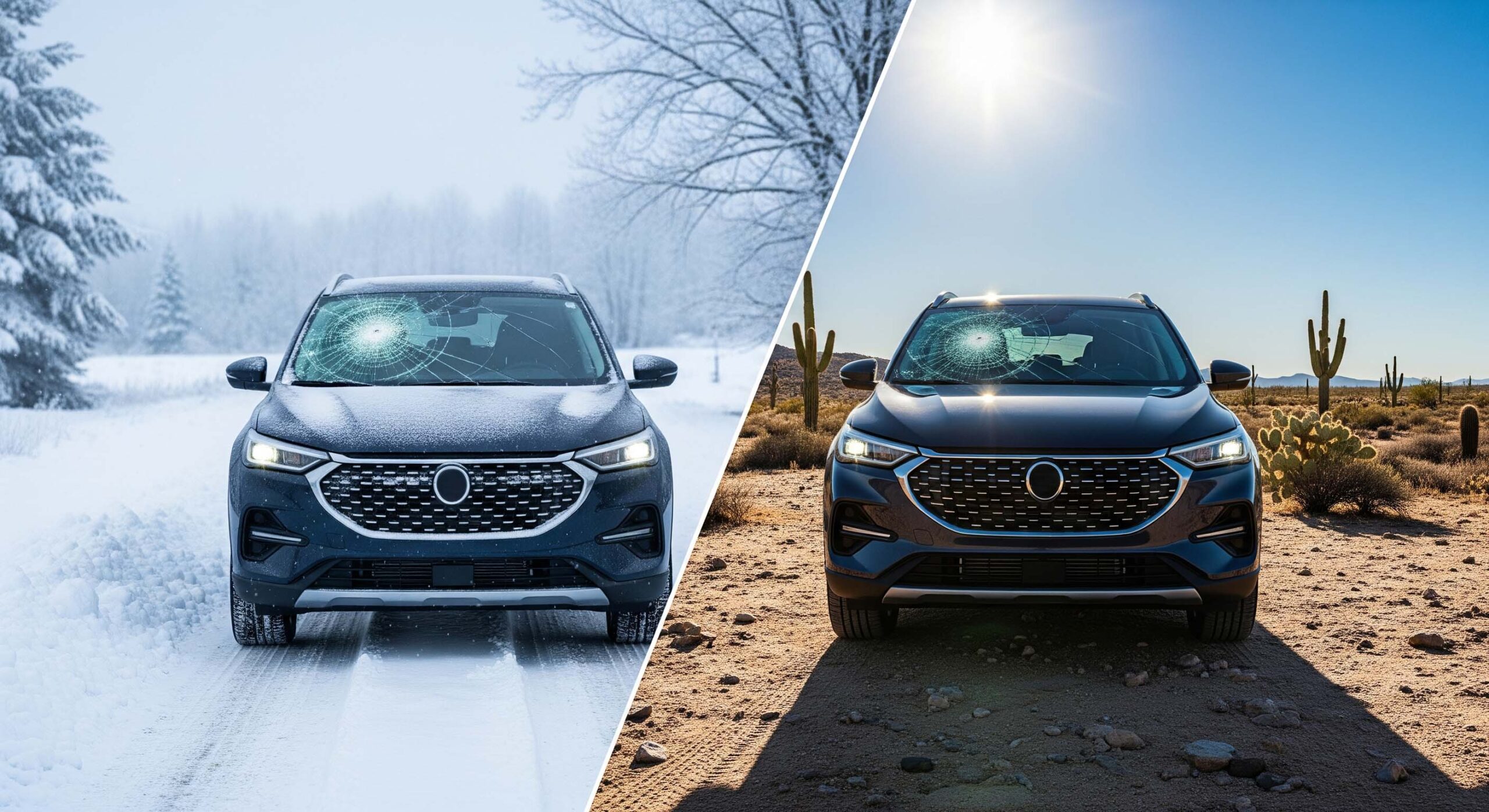Your car’s windshield isn’t just a piece of glass – it’s a safety barrier, a structural component, and your window to the road ahead. But depending on where you live, the climate can have a surprising impact on how long your windshield lasts, and whether a small chip stays harmless or turns into a spreading crack.
In this article, we’ll explore how different climates affect auto glass, why even minor damage can quickly become a bigger issue, and why replacing a damaged windshield is vital for your safety.
How Climate Can Damage Your Windshield
1. Hot and Dry Climates
In areas with high heat and low humidity, such as the Southwest, glass expands during the day and contracts at night. This constant expansion and contraction can cause existing chips to spread into long cracks. UV exposure also weakens the glass over time and can damage the plastic inter-layer inside the windshield, reducing its strength.
2. Cold and Icy Conditions
When temperatures drop, glass contracts – making it more brittle. If water seeps into a chip or crack and freezes, it expands, forcing the damage to widen. Using hot water to melt ice or blasting the defroster on full heat can also shock the cold glass, worsening existing damage.
3. Humid and Rainy Environments
Moisture is a major enemy of damaged windshields. When rainwater enters a chip, it can carry dirt or debris into the damaged area, making repairs less effective or even impossible. Over time, moisture can weaken the bond between the windshield layers.
4. Seasonal Temperature Swings
Regions with large day-to-night or seasonal temperature fluctuations put glass under constant stress. Rapid changes – such as leaving your car in the sun and then blasting cold AC – can accelerate crack growth.
Why Small Chips Can’t Be Ignored
A chip might seem harmless at first, but climate stressors can make it grow in a matter of days or even hours. Once a crack spreads beyond a certain point (usually around 6 inches), it can’t be repaired and requires full replacement.
Small chips can:
- Obstruct your vision.
- Compromise windshield strength.
- Cause your vehicle to fail state safety inspections.
The Safety Risks of Driving with a Damaged Windshield
Your windshield is a crucial part of your vehicle’s safety system:
- Structural Support in a Crash: In a rollover, the windshield helps keep the roof from collapsing.
- Airbag Deployment: Passenger-side airbags rely on the windshield to deploy correctly.
- Shatter Resistance: Modern windshields are laminated to stay intact in a collision, but cracks can weaken that protection.
A compromised windshield can fail when you need it most. That’s why replacement isn’t just about looks – it’s about safety.
Don’t Wait – Get It Fixed
If you have windshield damage, acting quickly can save you money and protect your safety. Repairs are often less expensive than replacements, but only if you catch the damage early.
Tip: Use our free quote tool to compare prices from up to three reputable auto glass shops in your area. You can find the best service, price, and turnaround time – all in minutes.
Bottom Line:
Climate plays a major role in how quickly windshield damage spreads. Whether you live in the heat of Arizona, the icy Midwest, the humid Southeast, or a place with wild seasonal swings, small chips can quickly turn into large cracks. Protect your visibility, your vehicle’s structure, and your safety by repairing or replacing your windshield promptly.


